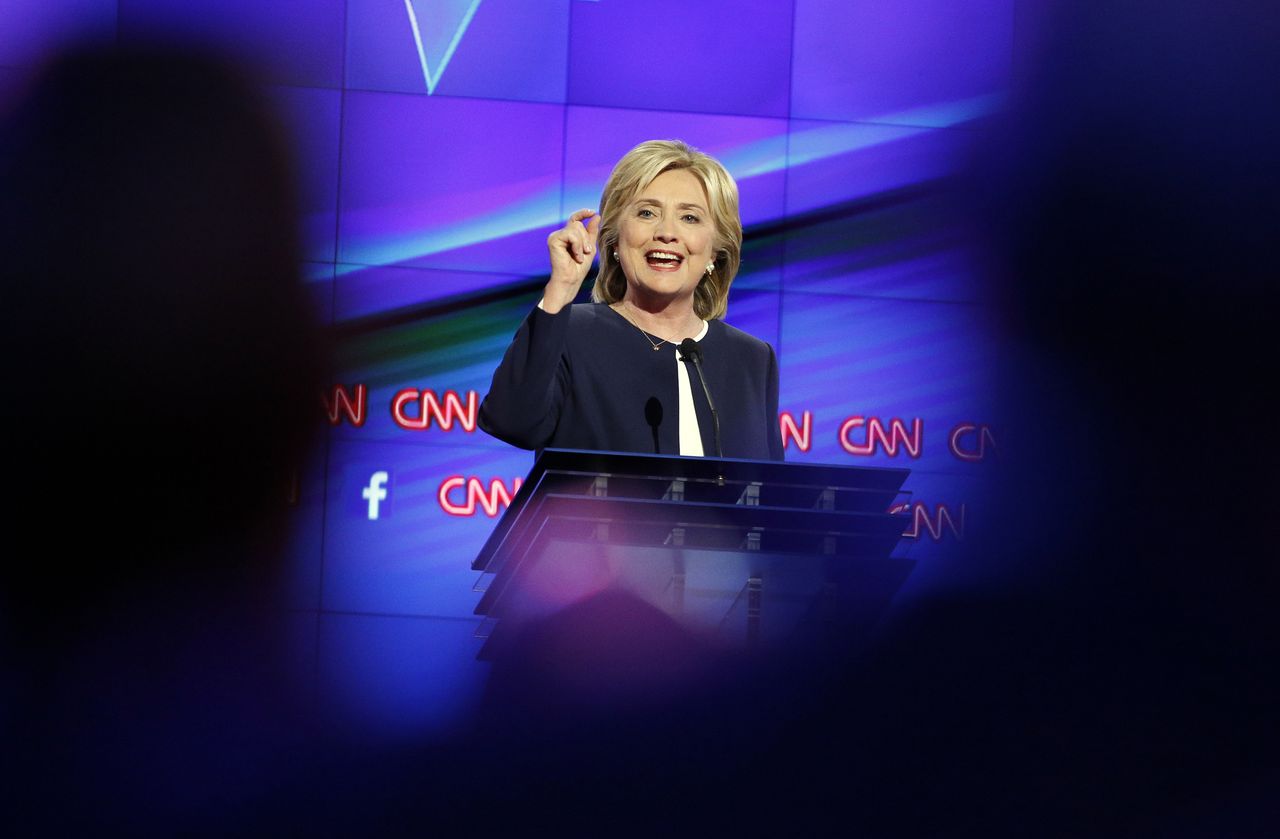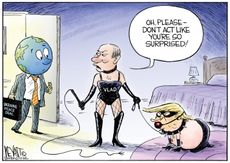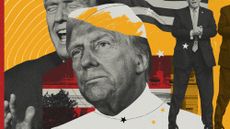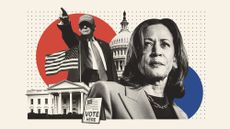What Hillary gets right about Glass-Steagall
Clinton's financial reform plan is the best response to what actually happened during the Great Recession


Reinstating the Glass-Steagall Act has achieved something close to totemic significance in the Democratic Party. It's the 1933 law that forbade financial companies from engaging in both commercial and investment banking. It was scrapped in 1999 by the Gramm-Leach-Bliley Act, which was passed by a conservative Congress and signed by Democratic President Bill Clinton. And at Tuesday night's debate between the party's presidential hopefuls, former Maryland Gov. Martin O'Malley went hard on the idea that resurrecting Glass-Steagall's firewall is central to preventing a repeat of the Great Recession — and he knocked Hillary Clinton for not sharing his enthusiasm.
It's worth pondering, because concentrating on Glass-Steagall tells a particular story about how the financial crisis happened. That story implies certain things we should do, and certain things we should learn.
In this case, the story O'Malley is telling isn't quite right. And Clinton's financial reform plan, while not as sound-bite friendly, tells a better one.
Subscribe to The Week
Escape your echo chamber. Get the facts behind the news, plus analysis from multiple perspectives.

Sign up for The Week's Free Newsletters
From our morning news briefing to a weekly Good News Newsletter, get the best of The Week delivered directly to your inbox.
From our morning news briefing to a weekly Good News Newsletter, get the best of The Week delivered directly to your inbox.
The story of the Great Recession begins with the housing bubble, and the mortgage-backed security (MBS). A form of financial engineering that sliced and diced mortgages into incredibly complex cash flows that were then sold off to investors, MBSs first became widespread in the late 1990s. Regulators and ratings agencies proved woefully inadequate to the challenge of assessing their risk, so MBSs allowed a massive wave of doomed mortgages to flood the financial system under the guise of ultra-secure investments.
Meanwhile, the rise of developing countries across the world meant the global economy was awash in new cash looking for a safe place to land. The United States was recovering from the tech bubble, and investing in housing was an attractive way to make money — which then drove consumption throughout the economy, which then circled back around to more investment in housing and ever-higher prices. Another important factor was probably the rise of inequality: As sustainable economic security got further out of reach for more Americans, a ride on the booming housing market became an attractive (if unsustainable) way to close the gap. This all drove the demand for MBSs through the roof.
The companies that put MBSs together were also rarely the ones that held on to them. Instead, they were sold off to other financial institutions and proliferated through the system. The incentive was to maximize volume and minimize care.
Then there was the credit default swap (CDS) — yet another bit of financial engineering that hit in the late 1990s. These were bets financial companies could make to offset the risk of MBSs. That made the mortgage-backed instruments even more attractive, and spread the linkages even further throughout the system.
Put it all together, and the financial industry had a massive incentive to prey on everyday Americans with bad mortgages, and both the motive and the means to flood the entire financial system with those toxic assets. (Keep in mind none of this requires government tinkering or intervention.) But if you were focused on the distinction between commercial and investment banking, which is what Glass-Steagall had reinforced, you wouldn't have predicted how the crisis played out at all.
Citigroup and Bank of America were both major banks that took advantage of Glass-Steagall's repeal to get into both commercial and investment banking. And they did require big bailouts. But as Neil Irwin pointed out, Bear Sterns, Lehman Brothers, Merrill Lynch, Goldman Sachs, and Morgan Stanley were all solely investment banks, and AIG was just dealing in insurance. (Along with three others, AIG is a nonbank financial company now listed by the Financial Stability Oversight Council as a systemic risk.) The combined MBS-CDS rot spread across every species of bank and nonbank in the financial system, connecting them all through a marketplace known as the "shadow banking" sector.
Clinton clearly gets this. "We also have to worry about some of the other players — AIG, a big insurance company; Lehman Brothers, an investment bank," she said in the debate. "There's this whole area called 'shadow banking.' That's where the experts tell me the next potential problem could come from."
Now, while the repeal of Glass-Steagall was not central to all this, another law, passed by all the same bipartisan players in late 2000, arguably was: the Commodity Futures Modernization Act, which exempted both derivatives (the category under which MBSs fall) and CDSs from regulation by both the Securities and Exchange Commission and the Commodity Futures Trade Commission. Alan Greenspan, chair of the Federal Reserve at the time, also famously refused to step into the subprime housing market with the Fed's regulatory powers. And other laws also helped speed along the process.
So while Glass-Steagall's fans may be wrong about their favored piece of law, their instincts about the deregulatory mania of the period is right on. And during the 2000s, it was effectively the Wild West.
This does not mean that, had either or both agencies been able to step in and regulate these financial instruments, they could have stopped the housing bubble. They probably couldn't have. But the unencumbered spread of the MBS-CDS web is what transformed the housing bubble from "very painful" to "potentially world-ending." And that could've been curtailed.
This story should also make it clear that financial reform is an all-hands-on-deck affair. We need to bring the entire financial system — banks, nonbanks, shadow banks, all of them — under consistent regulatory scrutiny. We need to enforce transparency, ensure there are financial buffers, provide a way to unwind collapsing institutions safely, and protect everyday consumers from predation. The 2010 Dodd-Frank law, to its credit, got the ball rolling on all of this, though it doesn't go far enough in winding down the size of the biggest and most systemically dangerous companies. At the end of the day, the smaller the company is, the less of a threat its collapse would pose.
Clinton's proposals not only double down on Dodd-Frank's strengths, they also address its weaknesses: strengthening capital requirements for financial institutions, and imposing an escalating system of fees on players that pass a certain size. Probably the best service Bernie Sanders, O'Malley, and Clinton's other opponents could provide is to force her to make the capital requirements and the fees as big as possible.
None of which is to say Glass-Steagall shouldn't be reinstated. You never know exactly where the next crisis will come from, so multiple fail-safes are a good idea. But in this case, Clinton's plan is the most substantive response to the Great Recession as it actually happened.
Sign up for Today's Best Articles in your inbox
A free daily email with the biggest news stories of the day – and the best features from TheWeek.com
Jeff Spross was the economics and business correspondent at TheWeek.com. He was previously a reporter at ThinkProgress.
-
 North Korea may have just pulled off the world's biggest heist
North Korea may have just pulled off the world's biggest heistUnder the Radar Hermit kingdom increasingly targets vulnerable cryptocurrency, using cybercrime to boost battered economy and fund weapons programmes
By Harriet Marsden, The Week UK Published
-
 Today's political cartoons - March 2, 2025
Today's political cartoons - March 2, 2025Cartoons Sunday's cartoons - world domination, fantasy dominion, and more
By The Week US Published
-
 5 dangerously funny cartoons about air travel
5 dangerously funny cartoons about air travelCartoons Artists take on fees, fears, and more
By The Week US Published
-
 'Seriously, not literally': how should the world take Donald Trump?
'Seriously, not literally': how should the world take Donald Trump?Today's big question White House rhetoric and reality look likely to become increasingly blurred
By Sorcha Bradley, The Week UK Published
-
 Will Trump's 'madman' strategy pay off?
Will Trump's 'madman' strategy pay off?Today's Big Question Incoming US president likes to seem unpredictable but, this time round, world leaders could be wise to his playbook
By Sorcha Bradley, The Week UK Published
-
 US election: who the billionaires are backing
US election: who the billionaires are backingThe Explainer More have endorsed Kamala Harris than Donald Trump, but among the 'ultra-rich' the split is more even
By Harriet Marsden, The Week UK Published
-
 US election: where things stand with one week to go
US election: where things stand with one week to goThe Explainer Harris' lead in the polls has been narrowing in Trump's favour, but her campaign remains 'cautiously optimistic'
By Harriet Marsden, The Week UK Published
-
 Is Trump okay?
Is Trump okay?Today's Big Question Former president's mental fitness and alleged cognitive decline firmly back in the spotlight after 'bizarre' town hall event
By Harriet Marsden, The Week UK Published
-
 The life and times of Kamala Harris
The life and times of Kamala HarrisThe Explainer The vice-president is narrowly leading the race to become the next US president. How did she get to where she is now?
By The Week UK Published
-
 Will 'weirdly civil' VP debate move dial in US election?
Will 'weirdly civil' VP debate move dial in US election?Today's Big Question 'Diametrically opposed' candidates showed 'a lot of commonality' on some issues, but offered competing visions for America's future and democracy
By Harriet Marsden, The Week UK Published
-
 1 of 6 'Trump Train' drivers liable in Biden bus blockade
1 of 6 'Trump Train' drivers liable in Biden bus blockadeSpeed Read Only one of the accused was found liable in the case concerning the deliberate slowing of a 2020 Biden campaign bus
By Peter Weber, The Week US Published